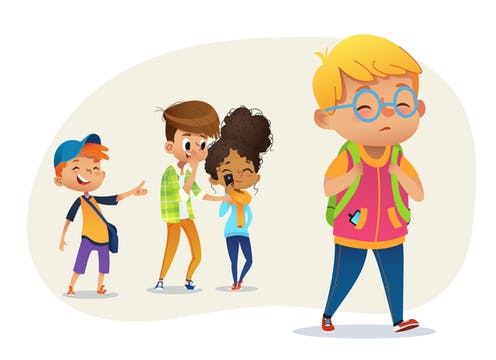
Published — March 11, 2021
The following post does not create a lawyer-client relationship between Alburo Alburo and Associates Law Offices (or any of its lawyers) and the reader. It is still best for you to engage the services of your own lawyer to address your legal concerns, if any.
Also, the matters contained in the following were written in accordance with the law, rules, and jurisprudence prevailing at the time of writing and posting, and do not include any future developments on the subject matter under discussion.
Aside from anti-bullying, know more about mental health policies: IMPLEMENTATION OF MENTAL HEALTH WORKPLACE POLICES AND PROGRAMS FOR PRIVATE SECTOR
-
Student refers to a person who attends classes in any level of basic education
-
Bully refers to any student who committed acts of bullying
-
Bullied or victim refers to any student who experiences the acts of bullying or retaliation
Mechanisms and procedures in handling bullying incidents in schools are provided for by law.
Before dealing with mechanisms and procedures in handling bullying incidents, let us talk about bullying itself.
What is Bullying?
The law says:
Bullying refers to any severe, or repeated use by one or more students of a written, verbal or electronic expression, or a physical act or gesture directed at another student that has the effect of actually causing or placing the latter in reasonable fear of physical or emotional harm or damage to his property; creating a hostile environment at school for the other student; infringing on the rights of another student at school; or materially and substantially disrupting the education process or the orderly operation of a school.
The term bullying includes social bullying and gender-based bullying. Social bullying refers to any deliberate, repetitive and aggressive social behavior intended to hurt others or to belittle another individual or group while gender-based bullying refers to any act that humiliates or excluded s person on the basis of perceived or actual sexual orientation and gender identity (SOGI).
What is clear from the definition above is that there is a bully referring to the student who commits acts of bullying, and there is a bullied or victim referring to the student who experiences the acts of bullying or retaliation. Both the bully and the bullies are students who attend classes in any level of basic education. Pupils and learners are also included in the term student.
What are considered acts of bullying?
The law says:
The acts of bullying are, but not limited to, the following:
- Any unwanted physical contact between the bully and the victim like punching, pushing, shoving, kicking, slapping, tickling, headlocks, inflicting school pranks, teasing, fighting and the use of available objects as weapons;
- Any act that causes damage to a victim’s psyche and/or emotional well-being;
- Any slanderous statement or accusation that causes the victim undue emotional distress like directing foul language or profanity at the target, name-calling, tormenting and commenting negatively on victim’s looks, clothes and body;
- “Cyber- bullying” or any bullying done through the use of technology or any electronic means.
It also includes any conduct resulting to harassment, intimidation, or humiliation, through the use of other forms of technology, such as, but not limited to texting, email, instant messaging, chatting, internet, social media, online games, or other platforms or formats.
- Any other form of bullying as may be provided in the school’s child protection or anti-bullying policy, consistent with the Anti-Bullying Act and its implementing rules and regulations.
As to mechanisms and procedures in handling bullying incident in schools, a related article will be posted in a few days.
Alburo Alburo and Associates Law Offices specializes in business law and labor law consulting. For inquiries, you may reach us at info@alburolaw.com, or dial us at (02)7745-4391/0917-5772207.
All rights reserved.
SUBSCRIBE NOW FOR MORE LEGAL UPDATES!
[email-subscribers-form id=”4″]


